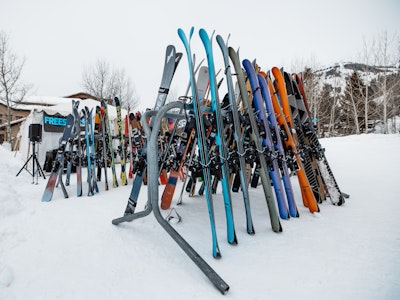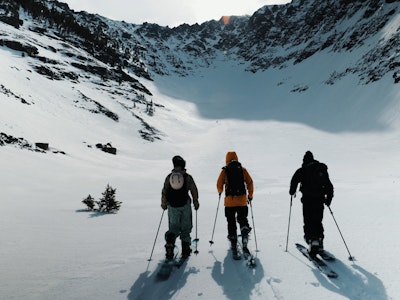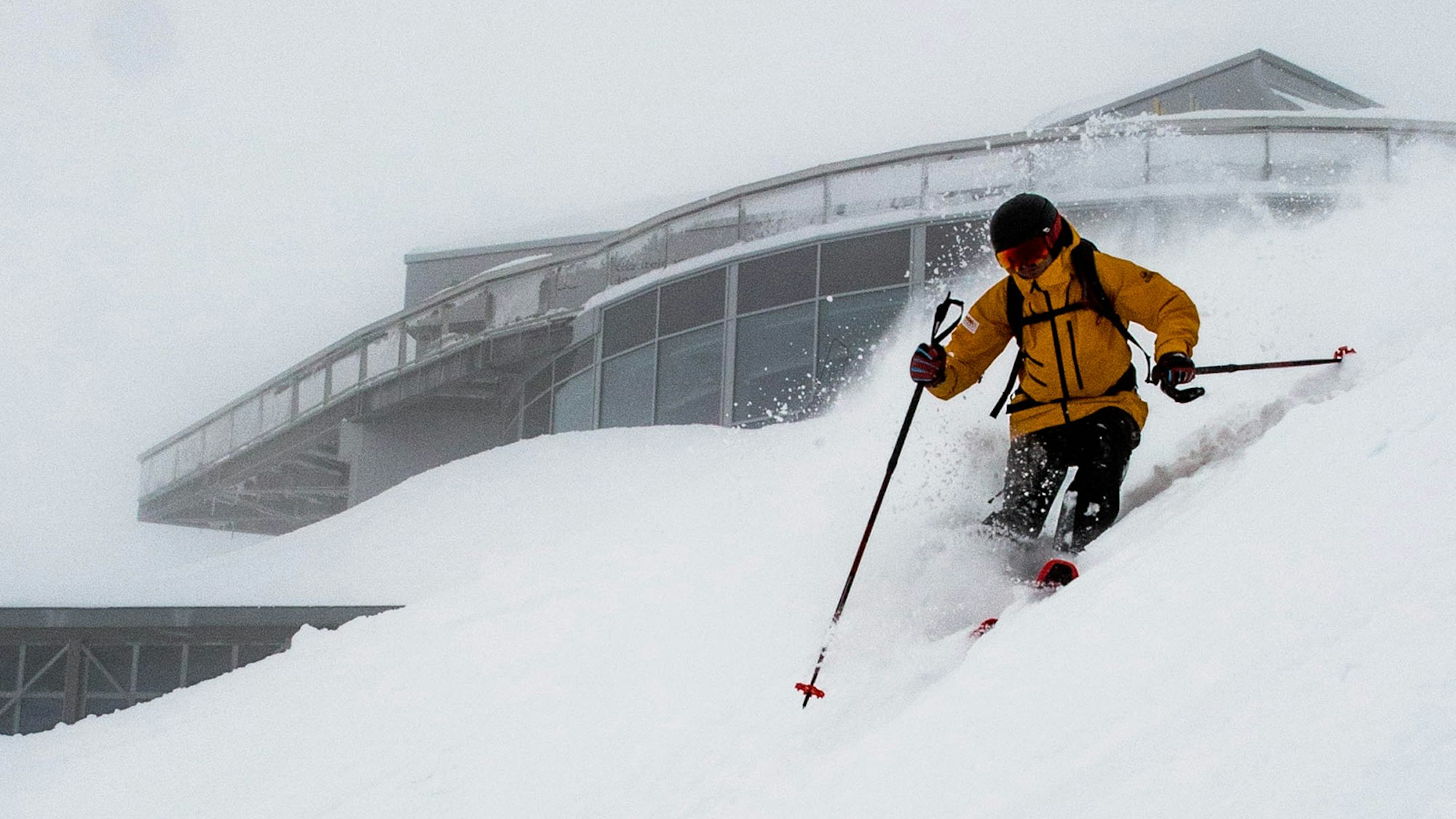WORDS & PHOTOS • SAM TAGGART
For Atomic, product design and development doesn’t stop with skis. Committed to advancing the sport in every way, the heritage brand also centralizes its hardgoods programs—think: boots, helmets and goggles—at its headquarters in Altenmarkt, just steps from its factory, in the heart of the Austrian Alps. In this special feature story, we’re taking a look beyond the The Hills Are Alive article featured in FREESKIER’s Resort Guide (22.2), diving deeper into the products and the people who make them come to life.
Below, you’ll find a conversation with Peter Wirthenstätter, the business unit director at for protective equipment at Atomic. Overseeing production and development of the brand’s helmets and goggles, as well as poles, body protection and accessories like travel bags, Wirthenstätter’s nearly twenty years of experience have afforded him the chance to grow alongside the ever-changing ski industry. Working with top athletes at Atomic—such as Chris Benchetler and the rest of the brand’s freeride team—Wirthenstätter is currently at the helm of the evolution in protective gear that implements top-tier safety qualities in stylish, athlete-inspired packages.
To start, what evolutions in helmets and goggles have been most influential during your nearly two decades-worth of experience in the ski industry?
First of all, the perception of helmets and goggles has completely changed. 20 years ago, it was a “special interest” topic where racers or big-mountain skiers were using helmets to protect them in extreme conditions; nowadays, [wearing a helmet and goggles] is a fashion accessory, it’s a statement for many people. When you look at the silhouette of people on the mountain, as soon as you see someone not wearing a helmet, that person looks weird to you. That was completely the other way around 20 years ago. What created that paradigm shift was not only incredible development in terms of materials and aesthetics, but also in the comfort-factor and how easy it is to wear a helmet now. Back then, the helmet was just a piece of plastic with hardly any comfort lining in there—you couldn’t hear well, it didn’t fit well, it looked stupid and it was huge. Now, helmets are smaller, they fit better and they integrate nicely with goggles. Goggle-wise, it’s similar, I’d say… the performance of lenses is a completely different ballgame now. The field of vision [in new goggles] is amazing. If you ever have the chance, put on a goggle that is 20 years old and you’ll probably feel like you are looking through a tunnel; when you put on a modern goggle, you hardly recognize any frame.

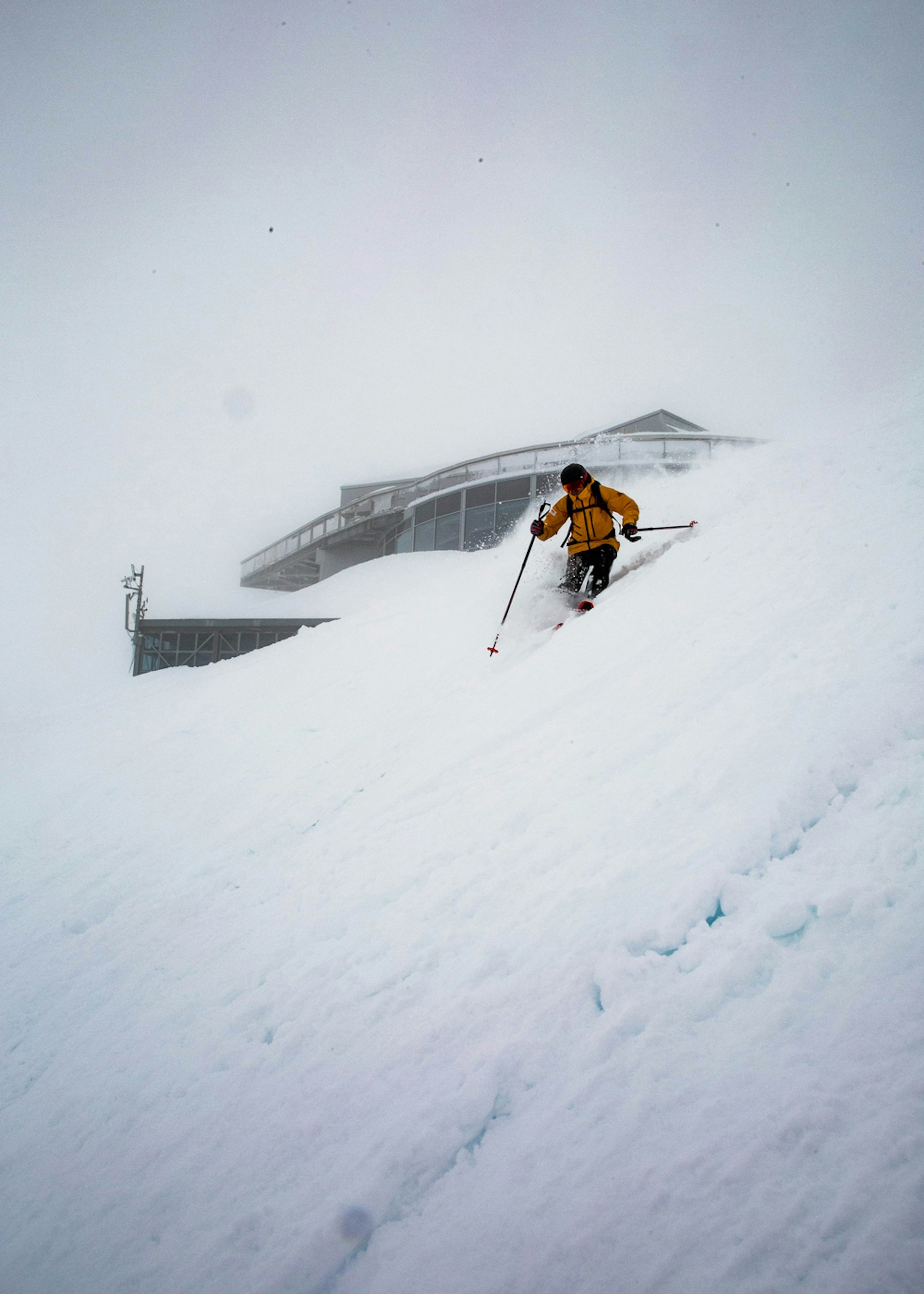
Donning the Count Amid helmet and Count 360 HD goggle, Atomic Ambassador Heli Putz makes his way down the Kitzsteinhorn glacier in Austria.
It seems like the conversation has also shifted to the point that it’s “cool” to be safe nowadays, especially because of those advancements.
Yeah, it has definitely shifted—it’s mainstream to wear a helmet… [and] if you wear the right helmet and the right goggle, it’s a statement. A great example of such a paradigm shift is Chris Benchetler: He used to be famous for skiing with a beanie! Now that he became a father, he’s gotten more mature and even better in the way he rides, and his awareness has changed, too. Now, he’s not only skiing with his signature, self-designed skis but we also built a helmet using his graphics that’s engineered to fit his needs. We see this happening a lot more now.
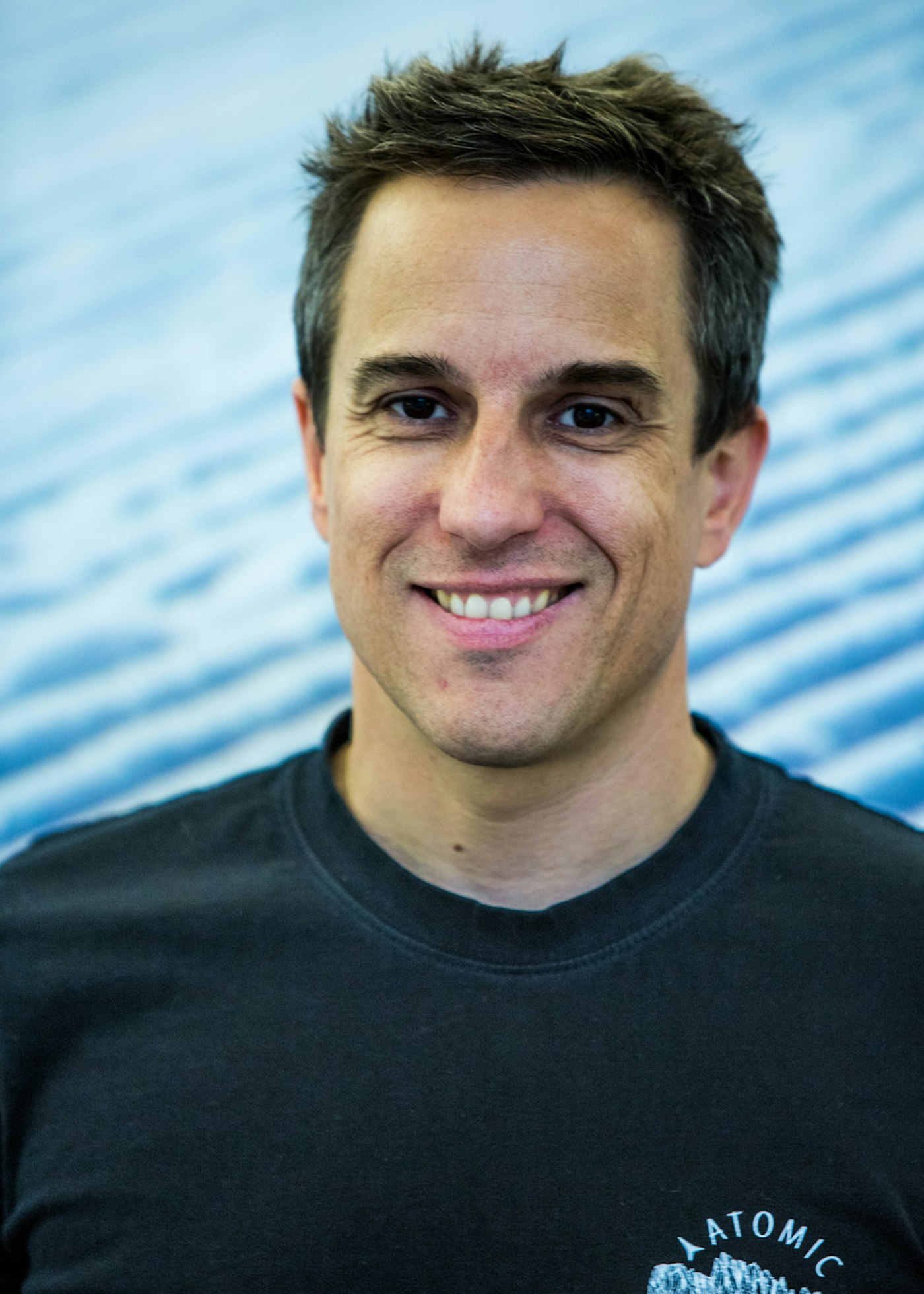
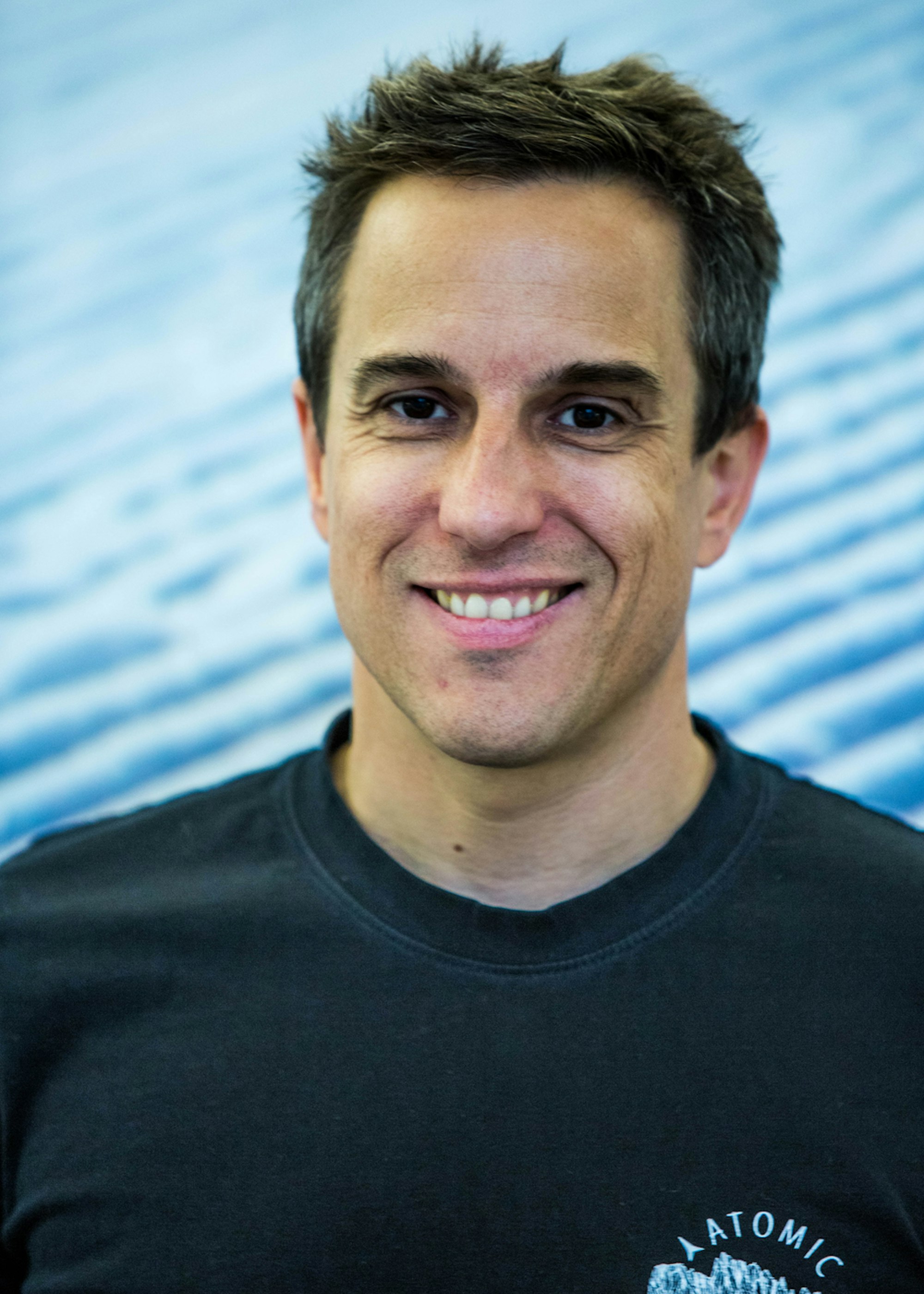
Peter Wirthenstätter, a veteran equipment developer at Atomic, works with the brand’s freeride athletes to develop helmets and goggles that fit the needs of today’s skiers.
What exactly is Chris and your other freeride athletes wearing on the hill? Why is that helmet/goggle combination so ideal for freeride skiing?
He’s riding in the Count Amid helmet, and we built it specifically to the needs of an off-piste skier. We gave it, what we call, an “inverted hybrid construction” by reenforcing the helmet with a strong, injected shell on its back and along its side while keeping it lightweight with an in-mold construction on top. We know from research that 85 percent of all impacts [to the head] are happening on the side or on the back of the helmet… that’s why it makes sense to create extra structural stability [in those areas.] In the case of the goggle, the Count 360 HD is our flagship. That goggle was designed and developed with the idea that we want to create a field of vision that is not blocked by any visible frames. Unique FDL Technology—”FDL” stands for “fusion double lens”—creates a bigger field of vision [by slimming the thickness of the lens].
How important is athlete input when Atomic is creating and refining its protective equipment?
It’s extremely important—no matter if it’s racing athletes or freeskiing athletes. Without the best gear… they won’t be the pinnacle of what they do, they won’t be the best in their sport. This means their needs are different… [but they have] a big stake in helping us understand what’s important for them and what could be important for other skiers. Chris Benchetler was specific on his helmet needs, saying he didn’t want to change his style. That means the helmet has to fit perfectly. It had to be small—if it’s too big, if it doesn’t look good, he wouldn’t wear it. [That pushed us] to build a helmet where the entry barrier of wearing is lower because it looks better, looks slimmer, more integrated. From that point of view, [he’s been] super important for us because he’s helped drive that development.

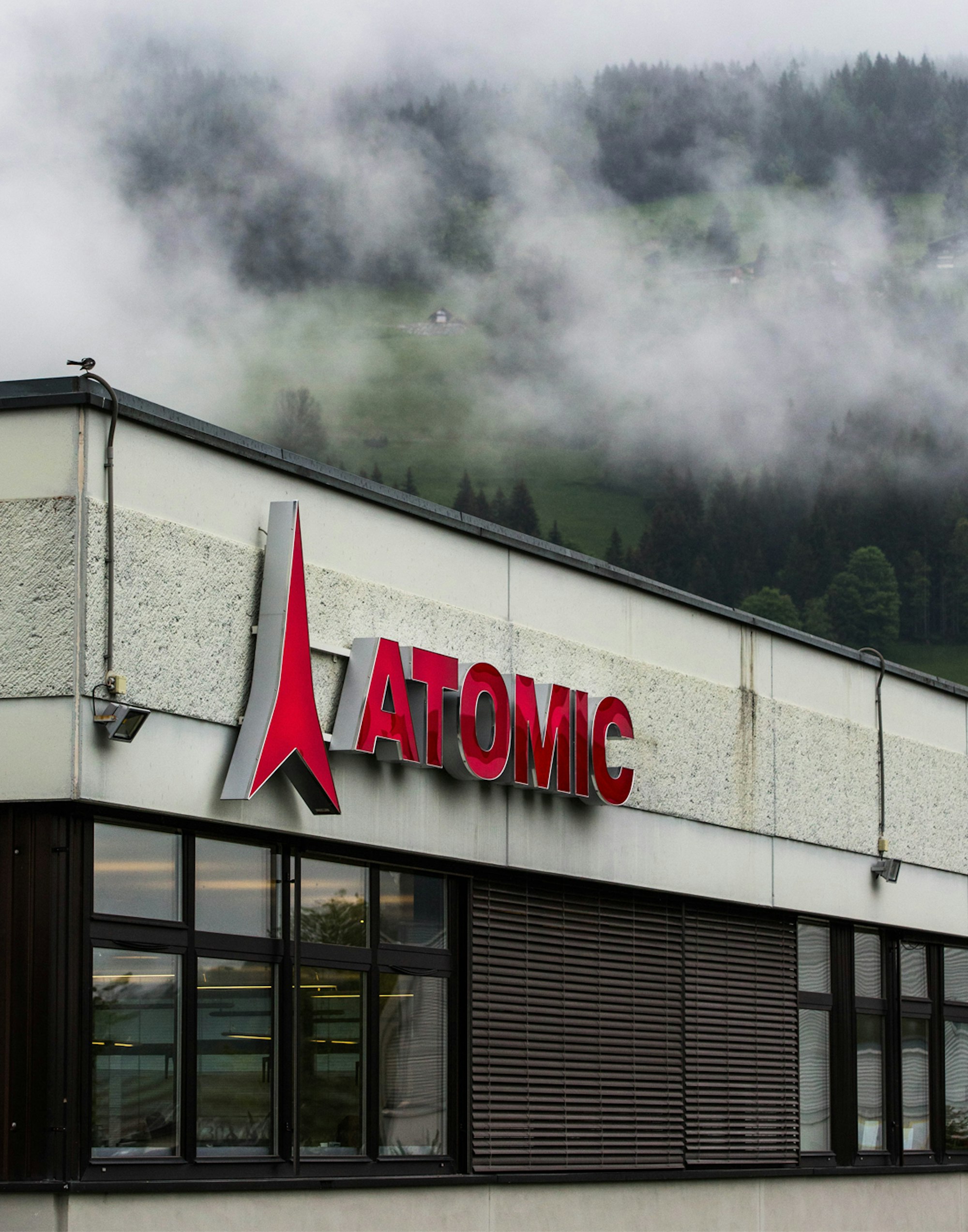
Nestled in the Austrian Alps, Atomic’s headquarters is the ideal location for designing and testing top-notch protective gear.
How does Atomic’s heritage come into play when you’re designing protective gear?
We see ourselves as a leading brand in skiing, which means we have a certain responsibility—it doesn’t stop with the skis. When you look back at the last 60-plus years, we’ve been in the industry, constantly developing and evolving, starting from the ski and, later on, completing the offer with a binding. Then, we entered the boot business and now, after a little time, we’re doing the same thing with [protective equipment]. We started getting really serious about it five or six years ago. Since we’ve built this business, [we’ve] developed our own features along with a strong, strong belief to understand the skier’s needs when it comes to helmets, specifically. Our thought processes is to build something that comes with a perfect, instant fit because the helmet can only protect you if you wear it, and you would only wear it if it fits you perfectly.
How does your team go about testing and ensuring the safety qualities of your helmets? In your opinion, what developments set Atomic gear apart from the rest?
To some degree, the first step is pretty simple: we have legal obligations and there are technical standards we have to fulfill both in the U.S. and Europe. But there is a level of beyond that, these test standards they really create a lapse situation which is a strong simplification of reality. That led us to one really interesting development. It’s simple compared to how cars work: When you think of an old car from the ’50s, with thick steel, if such a car hit a tree, the chances were good the tree was falling over but the driver was probably dead and the car still looked good. That’s not our intention—the helmet is built to save your life, not to look good after a crash. Today, the modern car hits the tree, the car’s front-end folds or collapses and the driver is alive. That’s the principle, one of the principles, that we apply to our helmets when it comes to safety—to employ a crumple zone in the helmet.
How long does it take you and your team to turn a product from idea to something that athletes are testing and you’re able to sell?
There is no clear answer, it depends on how far we want to throw the ball, so to say. In the case of the Benchetler helmet—the Count Amid—it was a two-and-a-half year project.
Looking ahead, what is Atomic focused on in the coming years? Where do you see the trends going in helmet and goggle production in the future?
The basics won’t change—in 5 years, even 10 years, it will be just as important that helmets offer the perfect fit and that they protect you as a skier. Same thing with goggles: perfect optics is the way to go. I believe we will see a lot of evolution—maybe even revolutions—in the way products are being made, mainly sustainability. It’s something where we would love to offer a way forward for the future but that’s something that’s certainly not happening overnight.

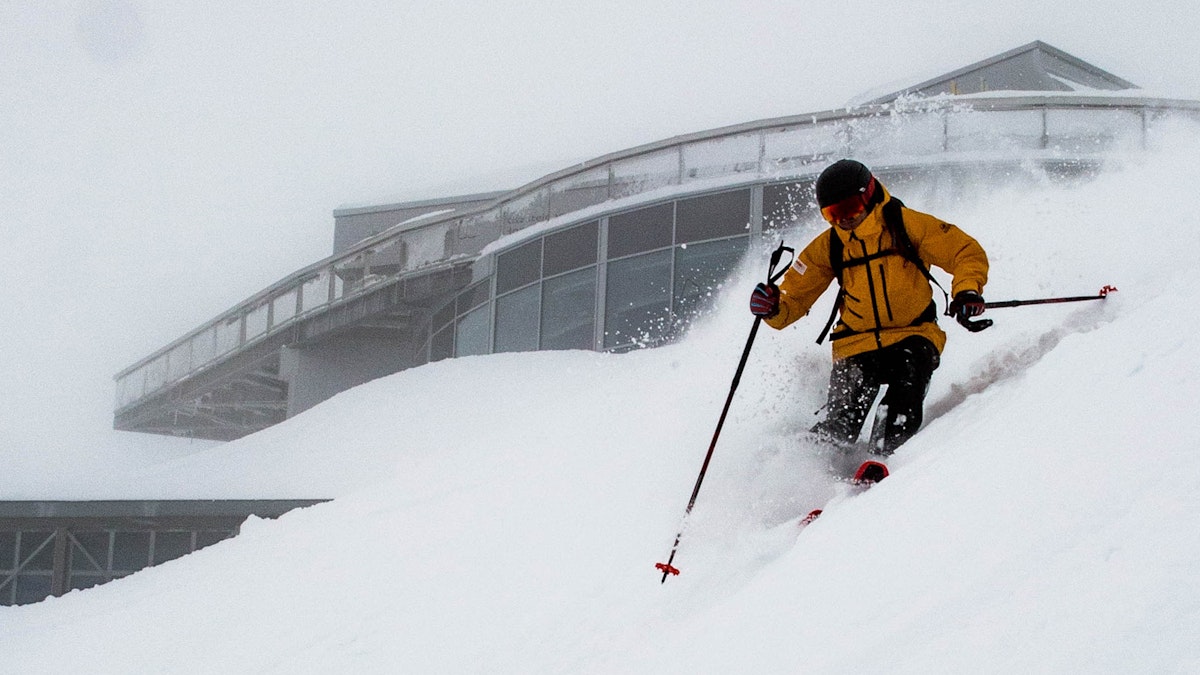
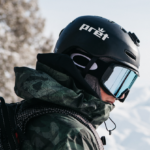
![[GIVEAWAY] Win a Head-to-Toe Ski Setup from IFSA](https://www.datocms-assets.com/163516/1765920344-ifsa.jpg?w=200&h=200&fit=crop)
![[GIVEAWAY] Win a Legendary Ski Trip with Icelantic's Road to the Rocks](https://www.datocms-assets.com/163516/1765233064-r2r26_freeskier_leaderboard1.jpg?w=200&h=200&fit=crop)
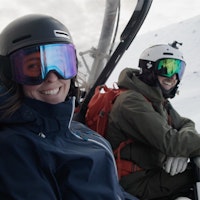
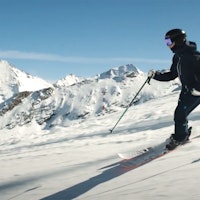
![[GIVEAWAY] Win a Legendary Ski Trip with Icelantic's Road to the Rocks](https://www.datocms-assets.com/163516/1765233064-r2r26_freeskier_leaderboard1.jpg?auto=format&w=400&h=300&fit=crop&crop=faces,entropy)
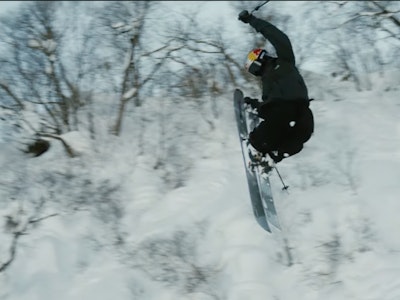

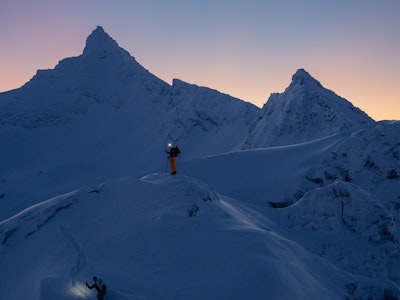
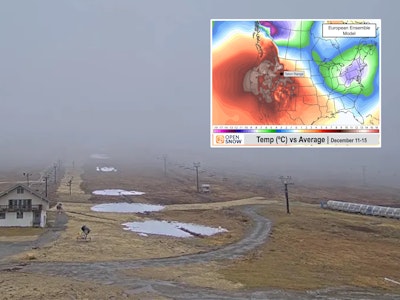
![[GIVEAWAY] Win a Head-to-Toe Ski Setup from IFSA](https://www.datocms-assets.com/163516/1765920344-ifsa.jpg?auto=format&w=400&h=300&fit=crop&crop=faces,entropy)
